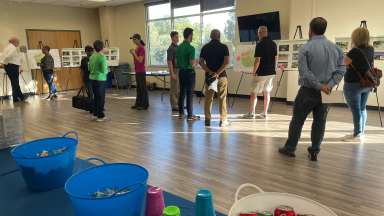Inform
The Inform pathway is a form of one-way communication conducted by the City of Raleigh to provide information to community members.
Consult
The Consult pathway is where community members are informed of and can provide feedback on provided options, but have little to no involvement in developing solutions.
Involve
The Involve pathway allows for more discussion with community members, as well as flexibility for alternative outcomes in the project; however, it is important to be transparent with the public about the final decision-making process before expectations are formed.
Collaborate
The Collaborate Pathway emphasizes the partnership between community members and the City, where a level of decision-making control is delegated to the community involved.
Note: Public involvement in the Collaborate Pathway typically involves a Community Advisory Group (CAG) which is a membership-specific committee that provides oversight of the project planning process and ensures that decisions include a broad representation of the community and stakeholders impacted by the project. CAG members help facilitate information sharing between the community and planning staff.
Decision-making often takes the form of consensus, which requires opposing interests to work together to develop a common and mutually acceptable solution. While final decision-making authority rests with elected officials, the public can influence decision-making and assist in making informed choices by helping to define the problem, generate a range of alternatives, develop evaluation criteria, and make recommendations.
Empower
The Empower pathway allows the community to make the final decisions.



